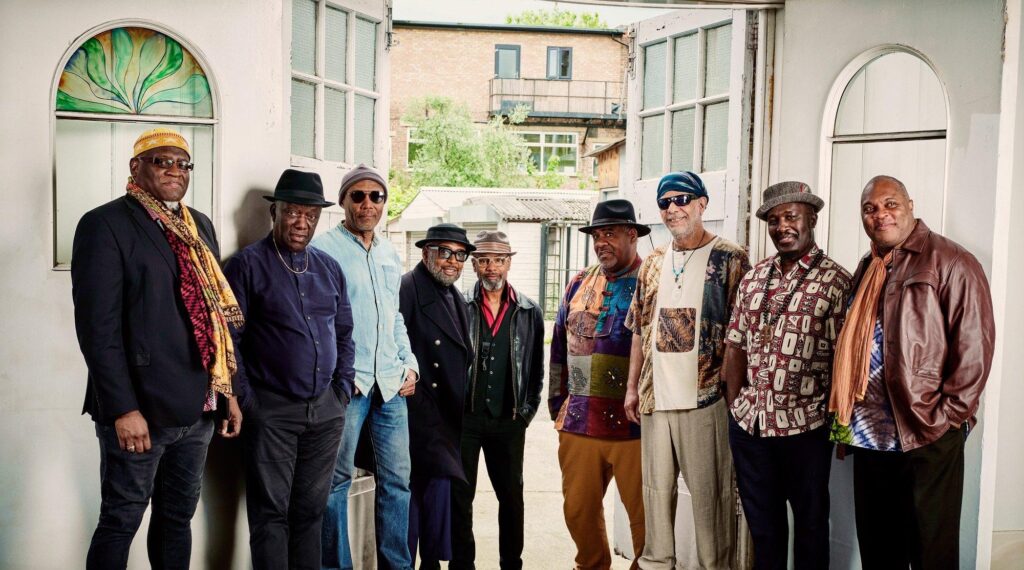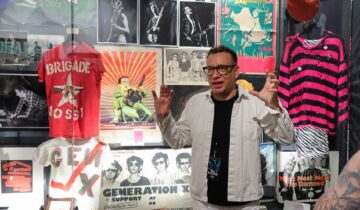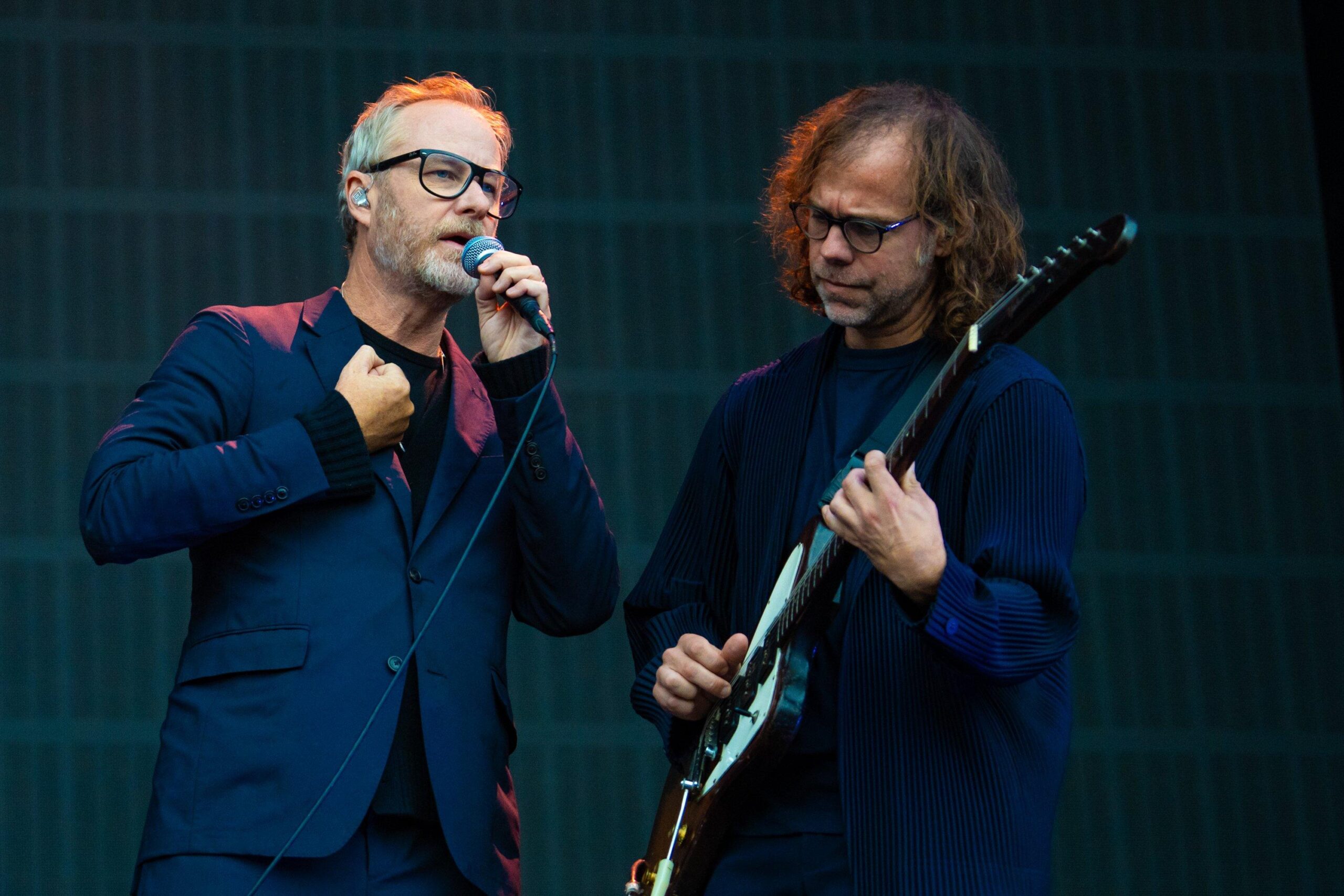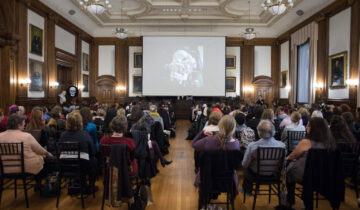Cymande’s latest record, ‘RENASCENCE,’ offers a fresh take on the politically-aware, infectious grooves that have defined their sound since forming in 1970. Ahead of the band’s U.S. headline tour, explore their pioneering music via five great tracks.
By Gary Moskowitz for GRAMMY.com | February 13, 2025

When Patrick Patterson and Steve Scipio formed Cymande in 1971 in South London, they had two main goals in mind: make original music, and make music with a message.
The group didn’t have a specific approach or genre, but pulled musical and cultural inspiration from the African and Caribbean roots of their predominantly Black communities. They wrote lyrics about the racism they faced in late-60s, early 1970s London. The resulting music was funky, but not overly busy or rushed; its laid-back grooves and melodies are clear, distinct, and uplifting.
In their late teens, guitarist Patterson and bassist Scipio played in a jazz group called Metre, and also played with a Nigerian band who introduced them to polyrhythmic ideas. These key elements carried over into Cymande, pronounced “see-Mahn-dee,” a word taken from the lyrics of a popular calypso song.
“Don’t ask me to play any covers, I can’t do covers,” Patterson tells GRAMMY.com. “Right from the start, we wanted to write our own music, and make it unique.”
Their decision to blend funk, soul, reggae, and jazz in unique ways quickly changed their lives in phenomenal ways. Over the course of just a few years, Cymande went from playing small basement clubs in London to touring the U.S. with Al Green, Kool & The Gang, Patty LaBelle, Billy Preston, Ramsey Lewis, and Mandrill.
“To be onstage with someone like Al Green was just fantastic. He was in a world of his own,” Scipio says. “In the small UK clubs, we were lucky to play for a hundred people. In America the biggest audience we had was 20,000 people. Some of the guys in the band were scared. It was a very rapid ascent.”
Cymande released three albums between 1972 and 1974, and their self-titled debut album reached the U.S. Billboard pop and R&B Charts. Their first single, “The Message” reached the Billboard Hot 100 and Hot R&B Charts. In 1972, the group became the first British band to perform at The Apollo Theatre in Harlem.
Coming back to the UK was a buzzkill for the band: they felt neglected and rejected by a British music industry that didn’t seem keen on nurturing all-Black bands. By the end of 1974 they went on hiatus, and Patterson and Scipio eventually both became practicing lawyers in the Caribbean. The group remained disbanded for decades.
In the ensuing years, Cymande has resurfaced in many different ways. British DJ Norman Jay introduced a new generation of listeners to Cymande by playing their records in the 1980s on London pirate radio. Early hip-hop DJs like Kool Herc sampled their music in the ’80s. In the 1990s, Cymande was sampled by the likes of De La Soul, Wu-Tang Clan, Gangstarr, MC Solaar and the Fugees; Spike Lee used their music in two of his films. They’ve released a handful of studio albums and compilations, and have regrouped for a handful of live performances. A documentary on their history, Getting It Back: The Story of Cymande, was released in 2022.
In January, the band released RENASCENCE, their first album of new material in a decade. The album’s 10 tracks have that same energy and style the band is known for, combined with the depth of a lifetime of experiences. Cymande is touring 10 U.S. cities in February and will perform this Spring and Fall in the UK. On Feb. 27, the GRAMMY Museum in Los Angeles will host a film screening of the band documentary, featuring a Q&A with Patterson and Scipio.
GRAMMY.com spoke with Patterson and Scipio about their lives in and out of Cymande, and selected the following songs that help illustrate the heart of their sound and style.
“Bra” (1972)
Arguably one of their most recognizable songs, “Bra” was named for a colloquial West Indian expression for brother, and the style of “Bra” and other songs written at that time were influenced by Miles Davis. The song originated with the bass line and rhythm, and the melody and the lyrics came later, according to Scipio.
Hip-hop group Gangstarr sampled “Bra” on their 1988 song “Movin’ On,” and De La Soul sampled it a year later. Filmmaker Spike Lee included the song in 1994’s Crooklyn and 2002’s 25th Hour.
“Dove” (1972)
This moody, psychedelic groove is almost 11 minutes long, punctuated by jazzy flute improvisations and haunting vocals. Wu-Tang Clan sampled it on their 1991 song “Problems,” and the Fugees and EPMD also sampled it later that same decade.
Scipio found out through his children that Cymande songs like “Dove” were being sampled in hip-hop. He and Patterson subsequently put their legal expertise to work to get their publishing rights back from the record labels, making sure they had full ownership of how their music was being used.
Beyond its highly sampled legacy, doves are central to Cymande: “Cymande” is a reference to a lyric from a calypso song called “Dove and Pigeon,” and dove images appear on their album covers. “The dove represents peace and love and for us,” Scipio told Rolling Stone in 2016.
“Brothers On The Slide” (1974)
This heavy groove — sampled by MF Doom in 2004 — maye have hints of Curtis Mayfield, but the standouts are all signature Cymande: clear, melodic bass line, hand percussion, poignant lyrics, and plenty of space for the song to breathe.
“Brothers On The Slide” is Cymande’s most popular song on Spotify, with nearly 50 million plays. The song appeared on their third album, Promised Heights, released in 1974. The lyrics seem to speak directly to young men who may be struggling with life’s hardships: “Working on the wrong side/What ya gonna do/You can’t win so you know you must lose/We know which way you goin.'”
“Promised Heights was kind of a realization of getting to where we want to be,” Scipio said in 2014. “The quality of the songs, the lyrics, are much deeper than what had gone before, and also the structure and arrangement of the songs was much more involved.”
“Crawshay” (1973)
“Crawshay” is a bouncy yet somber groove from the band’s 1973 album Second Time Round. The song is essentially two long, bluesy verse-chorus arrangements divided by a laid-back piano solo that conveys a feeling of sweet melancholy.
The chorus is a proud declaration of freedom: “It makes no difference what you think of me/Once again I’m free.”
Cymande began recording Second Time Round after their first U.S. tour. “In relation to the second album, we had a little more experience of not only writing but also of recording. We had a clearer vision of where our music should be going,” Patterson said in 2014. “We had more language in terms of what we wanted to say. We had a wider vocabulary. Some of the songs on Second Time Around didn’t speak simply to our local or national experience but perhaps we had a better world perspective. I feel our songs on the second album were deeper, and certainly to me more meaningful.”
“Coltrane” (2025)
Jazz has always been a through-line in Cymande’s music, and iconic artists like Miles Davis and John Coltrane were a huge influence since the group’s teenage years in South London in the 1960s.
It was important to Patterson and Scipio that they keep the core, recognizable elements of Cymande — jazz, reggae, soul, calypso, funk — but also not try to recreate the past. They wanted to continue the message of their three main albums, but also show that they have moved on and developed as people and musicians.
“Coltrane is so important to Black music,” Patterson says. “It’s not just about music, it’s about the Black experience. It’s so identifiable about Coltrane. And it’s been so important to our group as well, something that is forever. It’s a forever thing.”
Image by Dean Chalkley



